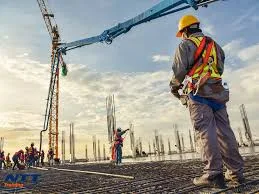Home renovations are no longer limited to simple updates like painting walls or replacing cabinets. Today’s projects are bigger, bolder, and far more ambitious. From removing entire walls and raising ceilings to installing massive glass panels and building second-story additions, modern renovations often require the kind of heavy-duty muscle that only professional rigging equipment can provide.
While many homeowners might think of rigging as something used in shipyards, warehouses, or commercial construction, the truth is that rigging equipment is also essential in residential projects. Without it, many large renovations we often take for granted simply wouldn’t happen.
This article explains how rigging equipment makes major home renovations safer, faster, and more precise. Whether you’re a homeowner, contractor, or project manager, understanding the value of rigging tools can help bring your renovation vision to life.
What Is Rigging Equipment?
Rigging equipment includes tools and devices used to lift, move, and secure heavy loads. These consist of components like pulleys, slings, shackles, spreader bars, and hoists. Often used with cranes or lifting systems, rigging gear helps workers move large or awkward materials safely and efficiently.
In home renovations, rigging is used for:
- Lifting structural beams and roof trusses
- Installing large windows or sliding glass doors
- Lifting HVAC units into attics or crawl spaces
- Moving hot tubs, pianos, or other large interior items
- Removing load-bearing walls or whole sections of the structure
Simply put, rigging tools are the behind-the-scenes workhorses that enable modern renovations to be more daring and complex than ever before.
Why Rigging Equipment Is Essential for Home Renovations
1. Handling Heavy Materials
Renovations often need materials that weigh hundreds or even thousands of pounds. Steel beams, concrete panels, granite countertops, and large appliances can’t be moved safely by hand.
Heavy lifting equipment helps crews lift and position these items with less physical effort. Hoists and slings distribute weight evenly, lowering the risk of injury or material damage. Often, rigging is what makes certain logistics possible or impossible.
2. Maintaining Structural Integrity
During major renovations, you might need to remove or replace structural components. Doing so without proper support can cause dangerous collapse or misalignment. That’s when rigging equipment comes into play.
By temporarily supporting loads or redistributing weight, rigging systems help maintain the structure’s integrity during modifications. For example, a spreader beam can support ceiling joists while a wall is removed. Without that support, the ceiling might sag or cave in.
3. Precision and Control
In residential construction, there is little margin for error. A single mistake when lowering a beam or installing a custom glass panel can result in thousands of dollars in damage—or worse, cause someone to get hurt on site.
Rigging equipment offers precise control over how materials move. Chain hoists and pulley systems enable slow, deliberate motion, which is crucial when maneuvering through tight spaces or lowering heavy objects into position. This level of control simply can’t be achieved with brute strength alone.
4. Improved Safety
Safety is a top concern in any construction project, and residential environments present their own challenges, such as tight workspaces, restricted access, and the presence of homeowners or children nearby.
Using professional-grade rigging equipment ensures that materials are handled safely and effectively. Loads are securely fastened, movements are controlled, and workers are less likely to experience strain or accidents caused by overexertion.
Common Types of Rigging Equipment Used in Home Renovations
While there are many rigging tools available, some are more commonly used in residential renovation projects than others. Here’s a quick overview of a few frequently used items:
1. Slings and Straps
These are versatile supports used to lift and secure materials. They can be made from wire rope, chain, or synthetic webbing, and are commonly used for lifting beams, countertops, and heavy appliances.
2. Chain Hoists
Chain hoists are mechanical devices used to lift heavy objects vertically. They’re perfect for confined spaces like basements or attics where cranes can’t reach. Their ability to move loads slowly and precisely makes them ideal for delicate operations.
3. Spreader Beams
Spreader beams evenly distribute a load’s weight across two or more points, reducing stress on both the lifting gear and the load itself. They are commonly used when lifting long or awkward materials, such as steel beams or trusses.
4. Rigging Hooks and Shackles
These secure the load to the lifting device. Different types of rigging hooks, such as clevis or swivel hooks, allow for various connections depending on the material being lifted.
5. Pulleys and Winches
These are used to redirect or boost lifting force. During renovations, pulleys and winches are helpful for lifting materials from the ground to an upper level, especially in homes with limited access points.
Examples of Rigging in Real-Life Renovations
Here are some real-world examples where rigging equipment is essential:
- Kitchen Expansion: Installing a steel beam to replace a load-bearing wall usually involves lifting the beam into position with a chain hoist and securing it with slings and hooks.
- Second Story Addition: Prefabricated roof trusses must be carefully lifted onto the home using a spreader beam to prevent damage. Precision is essential for aligning them with the existing structure.
- Basement HVAC Installation: Large furnaces or water heaters are lowered into basements with pulley systems and straps, reducing potential damage to stairwells or tight hallways.
- Glass Wall Installations: Oversized sliding doors or window panes are lifted with suction cups and winches, then carefully guided into position using precision rigging equipment.
When to Call a Professional Rigger
While general contractors might handle light rigging themselves, there are occasions when hiring a professional rigger becomes essential, especially for very heavy, valuable, or delicate materials.
Professional riggers are trained to assess load capacities, calculate centers of gravity, and identify the safest lifting techniques. They also bring specialized equipment and expertise that ensure the job is done right the first time.
Final Thoughts
Renovating a home is as much a feat of engineering as it is a work of design. Behind every bold transformation, from open-concept layouts to multi-level additions, careful planning and execution rely on rigging equipment.
With the use of hoists, slings, beams, and hooks, renovation crews can move mountains. As home improvement projects continue to increase in scale and complexity, rigging equipment will stay an essential part of making the impossible possible.
Whether you’re planning your dream renovation or working in the industry, understanding the power and accuracy of rigging tools can give you a new appreciation for what it takes to create the perfect space.

